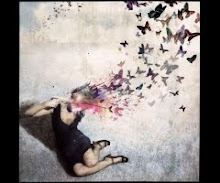Do other people do this? I tend to read in genre binges. For about half of my 15th year, I only read books about 17th and 18th century French aristocracy. (Louis XIV is one of my 5 imaginary dinner guests, consequently.) In the last year, this spring and summer was mainly devoted to American West/Plains Indians history. But, as my brother pointed out, basically anything interesting enough to write a nonfiction book about is a pretty depressing subject.
So as a change of pace, in the last month I've been reading one of my first loves, Victorian fiction, primarily detective stories. I've become reacquainted with my good friends, Holmes and Watson, (and NO, we shall not talk about the movie) and also the following:
1. A Treasury of Victorian Detective Stories, ed. Everett F. Bleier
2. From Hell, written by Alan Moore, drawn by Eddie Campbell
3. Gotham by Gaslight, w. Brian Augystn, d. Michael Mignola
(And definitely not Victorian, but I just finished up reading all of the Sookie Stackhouse novels, aka the Southern Vampire Mysteries, aka the True Blood books. In case you are wondering, no, they are not good, and there's like nine of them. This is a bleed-over from another minor phase of mine this fall: Twilight/modern horror, when I was watching lots of "Dexter" and having dreams that I was being eaten like a giant hamburger. But that's another post for another day.)
1. This book is awesome. It's one of the most entertaining books of short stories I've ever read. As I mentioned previously, there's a thrift store I go to where you can buy books by the pound. Which sounds awesome until I looked at my bookshelf and realized I've bought or acquired nearly 100 books in the last 13 months. It contains short stories by two of the big three in Victorian detective fiction:
A. Sir Arthur Conan Doyle, English, most famous for his character Sherlock Holmes, an English private eye.
B. Emile Gaboriau, French, most famous character M. Lecoq, a French inspector
C. Edgar Allen Poe, American, most famous character The Raven, but also well-known for Chevalier Auguste Dupin, also a French police inspector.
(If you are a Holmes fan you might recognize the latter two as being name-dropped in Holmes' first novel appearance, A Study in Scarlet. Watson compares his friend's amazing powers of deductive reasoning to the two famous detectives, to which Holmes replies, "No doubt you think you are complimenting me." Hahah BURN. Despite that, Doyle paid great homage to both Poe and Gaboriau, generally considered the fathers of the genre.)
This book also rules because it contains an extremely comprehensive introduction by the editor, Bleiler, where I learned cool facts like that there are two main time periods of Victorian detection: the 40's-50's, when Poe was writing Dupin, and the 70's-90's, when Doyle and Gaboriau were. Poe based his story "The Murder of Marie Roget" (which is set in Paris) on the death of a woman named Marie Roger in New Jersey. His work, with its amazingly clever endings (the letter hidden in plain sight; the nonhuman murderer) was one of the main reasons detective fiction became so immensely popular. One of the other main reasons, especially in England, is because the Scotland Yard, the metropolitan police force of London, was formed in 1829, and many people became immensely curious about police procedures, and then disillusioned with what they viewed were the failings of the police (hence the rise of snarky, overly-smart private detectives like Sherlock Holmes.)
I would recommend this book. Even the stories I've never heard of are fantastic (except perhaps the aforementioned Dickens story, but I cannot discount even that, because it's afforded me ever so much amusement.) But I don't know if you can buy books by the lb where you live, so you might be out of luck in trying to find it.
2. From Hell was written by one of the masters. You might recognize Alan Moore from his many famous works (V for Vendetta, The Watchmen) or from the fact that he is a legendary crazy person and looks like Rasputin and lives in a cabin in the woods or something, like a Montana Freeman. And make no mistake, FH is the best of the best, one of the best graphic novels ever written. It's exquisitely researched and annotated--Moore's footnotes alone take up about 100 pages, covering everything from where he made his research to the changes in London architecture and his and Campbell's painstaking attempts to recreate them on the page. If you're not familiar with this book, it's a reimagining of the Jack the Ripper murders, with them having been committed by Dr. William Whitey Gull, the personal physician of Queen Victoria. This is a real historical personage, and one of the names that's long been thrown around when people are naming candidates for the murderer. The book presupposes he does this for extremely abstruse, certifiably insane reasons; namely, that he's trying to invoke ancient powers channeled through the Masonic order. Yes! Awesome.
If you're one of those fags who still holds out and says that graphic novels are just comic books, la la la not a legit art form, this book will change your mind. Guarateed.
3. This is basically fanboys only. I shall sum up the plot thusly: It's basically about the same thing as FH, only it's got a different murderer, and instead of being investigated by real life police inspector Frederick Abberline, it's done by Batman. He is, after all, the world's greatest detective. This book is no masterpiece, but the drawings are pretty awesome, and it's got one of those awesome matchups that you could only make up while you are trying to fall asleep: BATMAN V. JACK THE RIPPER. I'd watch that.
Okay. Maybe more on this later. Maybe not. Wouldn't you like to know.
Wednesday, January 20, 2010
Three and Three
Subscribe to:
Post Comments (Atom)

No comments:
Post a Comment